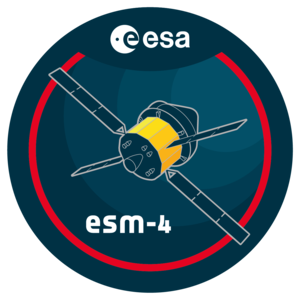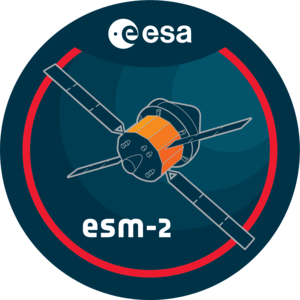Accept all cookies Accept only essential cookies See our Cookie Notice

About ESA
The European Space Agency (ESA) is Europe’s gateway to space. Its mission is to shape the development of Europe’s space capability and ensure that investment in space continues to deliver benefits to the citizens of Europe and the world.
Highlights
ESA - United space in Europe
This is ESA ESA facts Member States & Cooperating States Funding Director General Top management For Member State Delegations European vision European Space Policy ESA & EU Space Councils Responsibility & Sustainability Annual Report Calendar of meetings Corporate newsEstablishments & sites
ESA Headquarters ESA ESTEC ESA ESOC ESA ESRIN ESA EAC ESA ESAC Europe's Spaceport ESA ESEC ESA ECSAT Brussels Office Washington OfficeWorking with ESA
Business with ESA ESA Commercialisation Gateway Law at ESA Careers Cyber resilience at ESA IT at ESA Newsroom Partnerships Merchandising Licence Education Open Space Innovation Platform Integrity and Reporting Administrative Tribunal Health and SafetyMore about ESA
History ESA Historical Archives Exhibitions Publications Art & Culture ESA Merchandise Kids Diversity ESA Brand CentreLatest
Space in Member States
Find out more about space activities in our 23 Member States, and understand how ESA works together with their national agencies, institutions and organisations.
Science & Exploration
Exploring our Solar System and unlocking the secrets of the Universe
Go to topicAstronauts
Missions
Juice Euclid Webb Solar Orbiter BepiColombo Gaia ExoMars Cheops Exoplanet missions More missionsActivities
International Space Station Orion service module Gateway Concordia Caves & Pangaea BenefitsLatest
Space Safety
Protecting life and infrastructure on Earth and in orbit
Go to topicAsteroids
Asteroids and Planetary Defence Asteroid danger explained Flyeye telescope: asteroid detection Hera mission: asteroid deflection Near-Earth Object Coordination CentreSpace junk
About space debris Space debris by the numbers Space Environment Report In space refuelling, refurbishing and removingSafety from space
Clean Space ecodesign Zero Debris Technologies Space for Earth Supporting Sustainable DevelopmentLatest
Applications
Using space to benefit citizens and meet future challenges on Earth
Go to topicObserving the Earth
Observing the Earth Future EO Copernicus Meteorology Space for our climate Satellite missionsCommercialisation
ESA Commercialisation Gateway Open Space Innovation Platform Business Incubation ESA Space SolutionsLatest
Enabling & Support
Making space accessible and developing the technologies for the future
Go to topicBuilding missions
Space Engineering and Technology Test centre Laboratories Concurrent Design Facility Preparing for the future Shaping the Future Discovery and Preparation Advanced Concepts TeamSpace transportation
Space Transportation Ariane Vega Space Rider Future space transportation Boost! Europe's Spaceport Launches from Europe's Spaceport from 2012Latest

Working on European Service Module 2 engines
Thank you for liking
You have already liked this page, you can only like it once!
The European Service Module-2 (ESM-2) is somewhat like the portal it appears to be in this image. By providing power and propulsion for the Orion spacecraft, it will transport humans back to the Moon, roughly fifty years after humankind first landed on its surface.
In assembly at Airbus in Bremen, ESM-2 is the engine of the Orion spacecraft that will fly its second mission and first with a crew. The mission is called Artemis 2 and is set for launch in 2022.
The main engine is a repurposed Space Shuttle Orbital Maneuvering System engine that has flown in space before. The eight auxiliary thrusters come in as backup to this main engine and to provide orbit corrections.
Lastly, 24 smaller engines grouped into six pods provide attitude control. In fixed positions, they can be fired individually as needed to move the spacecraft in different directions and rotate it into any position.
The first European Service Module arrived at Kennedy Space Center in Florida in November 2018. It has since been mated with the Crew Module Adapter and Crew Module and the trio went for thermal and balance testing at NASA’s Plum Brook Facility in Ohio, USA.
Artemis 1 will qualify the spacecraft’s performance. Orion will make a flyby of the Moon, using lunar gravity to go into lunar orbit and propel itself 70 000 km beyond the Moon, almost half a million km from Earth – farther than any human has ever travelled.
On its return journey, Orion will do another flyby of the Moon before heading back to Earth.
The total trip will take around 20 days, ending with a splashdown in the Pacific Ocean without the European Service Module – it separates and burns up harmlessly in the atmosphere.
Artemis 2 will follow a similar flight path with a crew of four astronauts, but with a direct return trajectory that includes a flyby of the Moon, without entering Lunar orbit.
The European Service Module is built by Airbus, with smaller components coming from suppliers all over Europe, making the mission a truly international endeavour.
Orion is the first collaboration between ESA and NASA on a spacecraft that will take humans farther into space.
In addition to returning humans to the moon, Orion will be instrumental to building the Gateway a staging post to be located in lunar orbit that will allow humans to go deeper into space.
ESA is committed to working with partners globally to achieve its exciting vision of human and robotic exploration targeting the Moon and Mars.
-
CREDIT
Airbus -
LICENCE
ESA Standard Licence

Artemis rocket with Orion and European Service Module inside

Orion and European Service Module in Artemis rocket

Orion European Service Module-4 logo

Orion European Service Module-5 logo















 Germany
Germany
 Austria
Austria
 Belgium
Belgium
 Denmark
Denmark
 Spain
Spain
 Estonia
Estonia
 Finland
Finland
 France
France
 Greece
Greece
 Hungary
Hungary
 Ireland
Ireland
 Italy
Italy
 Luxembourg
Luxembourg
 Norway
Norway
 The Netherlands
The Netherlands
 Poland
Poland
 Portugal
Portugal
 Czechia
Czechia
 Romania
Romania
 United Kingdom
United Kingdom
 Slovenia
Slovenia
 Sweden
Sweden
 Switzerland
Switzerland

























